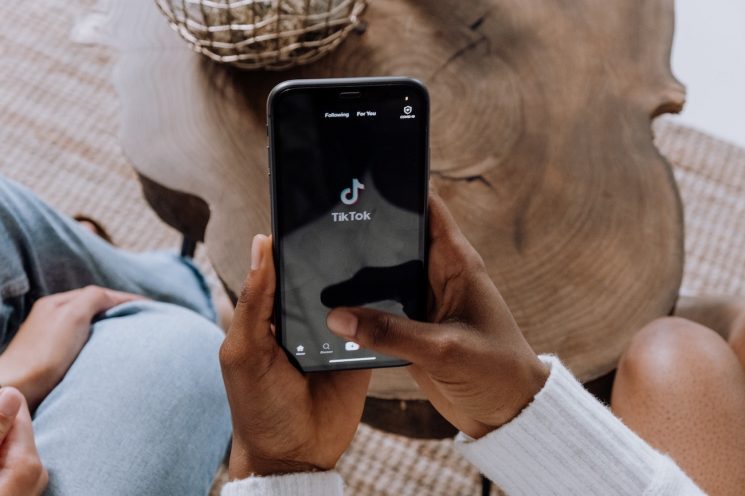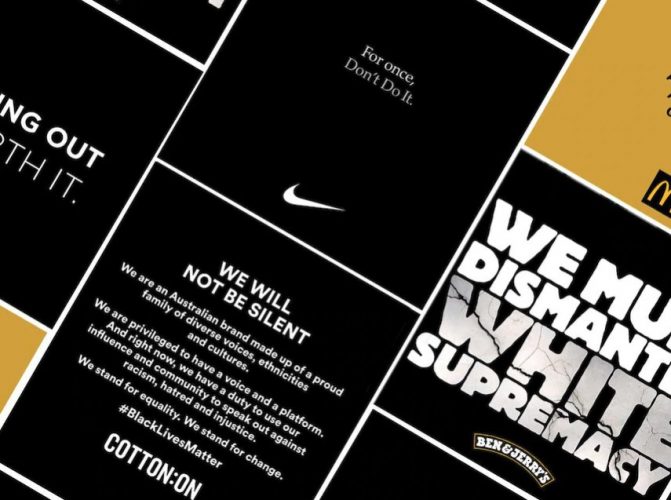How the pandemic has influenced social media marketing
By: Rachel Ward, Senior Campaign Manager, Social
Finding the right audience for the right message can make or break your marketing campaign. And with 7 in 10 Americans using some form of social media,¹ brands have a goldmine of opportunity for powerful reach and daily engagement with their target audience. However, the social media landscape we were working with one year ago is not the same one we’re working with today. From an onslaught of new users to cultural shifts in what our audiences choose to engage with, Kiosk shares pre- vs. post-pandemic social media trends, and what we can expect as we move through 2021.
The “before times” vs. now
Picture the life of an average social media user in 2019. Her usage probably peaked around her lunch break. She’d likely be scrolling from her mobile phone. Her purchases were probably most influenced by explicit ads from recognizable and established brands. If she saw an ad for some cute shoes, she’d be more likely to visit the brick and mortar store than to purchase online in a process she considered cumbersome. She received alerts on her mobile phone when her screen time went above the daily threshold she’d set for herself.
Picture that same user today. Her overall social media usage has increased 32% since shelter-in-place, and she’s less concerned with monitoring her screen time. She’s spending more time on social media during work hours, and much more of that usage is happening on a desktop computer while she works from home. It’s likely she favors online shopping now. That means she’s more influenced by user-generated content and would consider buying a skin-care product recommended by a micro influencer she’s started following. She prefers to buy from brands that reflect her increased interest in inclusivity and activism, and she’s more receptive to brands that promote authenticity over glamour.
The TikTok phenomenon

TikTok provides an interesting case study for many of the changes we’re seeing across social media channels since the pandemic took hold. With a global audience of close to 700 million, TikTok is the seventh most-used social platform in the world.² While teens may have been the earliest adopters of TikTok, as of June 2020, they only accounted for 32% of total users,³ indicating an accelerated “aging up” of the platform in the past year or so. Although TikTok is still very teen heavy, savvy social media marketers must consider that millennials, Gen X-ers, and even baby boomers have expanded and diversified their social platforms amid the COVID-19 pandemic.
TikTok’s success, in part, can be attributed to the waning attention span of the average social media user. The average attention span went from 12 seconds back in 2000 to 8 seconds in 2015,⁴ and it keeps on getting shorter and shorter, especially during the pandemic when so many digital platforms are competing for user attention. Across all channels, 53% of videos that are 90 seconds or less are watched to completion, yet only 56% of videos created by businesses today are two minutes or less.⁵ This leaves a big opportunity gap for brands looking to get an edge on the competition and experiment with short form. While TikTok isn’t for every brand, it provides a snapshot of some need-to-knows for social media marketers in 2021.
55+ age range turns digital

Traditionally the population most resistant to online shopping, baby boomers and seniors have taken a major digital pivot since the pandemic. 40.3% report making at least some digital shopping shifts, and 21.7% said their shifts to online shopping are permanent.⁶ While consumers of all ages have listed fear of infection, fear of contaminating someone else, or fear of dying as their top three pandemic-related worries, seniors have demonstrated some of the most dramatic consumer behavior shifts as a result. Seniors tend to most likely slot into the “safety shifter” category, embracing digital channels to buy groceries and other products due to their concern about catching the virus.
While this creates opportunities for brands to reach more audiences through social media advertising, it’s important to keep in mind that these non-digital natives tend to prefer a lighter touch when it comes to personalization. What a younger consumer might consider convenient (“Sweet — this ad for the T-shirt I searched earlier has a better price!”), an older consumer might consider off-putting (“How does Facebook know that I was interested in this T-shirt?”). Get creative with your messaging depending on who your audience is and where they are in the funnel.
Authenticity and privacy FTW

Source: ABC
With their ability to opt out of cookies and their willingness to boycott brands who don’t align with their values, consumers are directing their advertising experiences more than ever before. Brands that were previously more subtle in the communication of their values and more directive about the lifestyles they wanted to promote find themselves forced to be much more responsive amid the pandemic. As mainstream awareness of systematic racial, gender, and economic disparities increases, consumers want to know that brands support their values, and they expect brands to communicate this in explicit and authentic ways.
With that said, brands should reflect on their intentions before jumping feet first into issues making headlines. If you talk the talk about diversity, for example, but fail to walk the walk, consumers won’t be shy about calling out social media posts from companies whose documented actions fail to reflect their purpose-driven messaging, however well intended.
According to a recent Facebook report, 54% of Americans surveyed reported that they are more loyal to brands who stand for inclusion and diversity in online advertising.⁷ Yet, among survey participants in Brazil, the United Kingdom, and the United States, the majority (54%) said they do not feel fully culturally represented in online advertising and most (64%) said they would like to see more diversity in online advertising.⁷ Consumers want to know that brand value statements are authentic, and this extends to who is represented in creative as well as who is behind the camera and in the brainstorm room.
In addition to the expectation of authentic and inclusive advertising, consumers will also be getting used to more privacy. Within two years, consumers will need to opt in to cookies. If a user opts out of data sharing in this way, conversion events will be restricted, aggregated, and delayed; this will result in a decrease in attribution. As a result, social media users may be served less relevant ads as well as bombarded with pop-ups asking them to opt in to cookies. To address this, social media marketers can get creative with their messaging and increase retargeting efforts.
Where do we go from here?
At Kiosk, we love digging into this data and using it to help shape and influence the work we do. From campaign messaging to vertical video platforms, there have been massive opportunities for growth this year. Reaching new audiences in what would have previously been unexpected places, and constantly testing and optimizing what each audience responds best to depending on the platform. The growing social media and digital advertising landscape is inherently more inclusive, meeting people of all ages and walks of life exactly where they are. There’s a synergy between what brands need to communicate in this moment and the avenues available for them to do so, and we’re beyond excited about that.
To learn more about how we can help your business tap into emerging social media trends to further your growth, get in touch.
¹ pewresearch.org/internet/fact-sheet/social-media/
² blog.hootsuite.com/social-media-demographics/
³ statista.com/statistics/1095186/tiktok-us-users-age/
⁴ digitalinformationworld.com/2018/09/the-human-attention-span-infographic.html
⁵ convinceandconvert.com/content-marketing/video-is-the-now-but-short-form-video-is-the-future/
⁶ pymnts.com/news/ecommerce/2020/boomers-and-seniors-are-shifting-to-digital-shopping-too/
⁷ research.fb.com/wp-content/uploads/2021/03/Diverse-and-inclusive-representation-in-online-advertising-An-exploration-of-the-current-landscape-and-peoples-expectations.pdf
